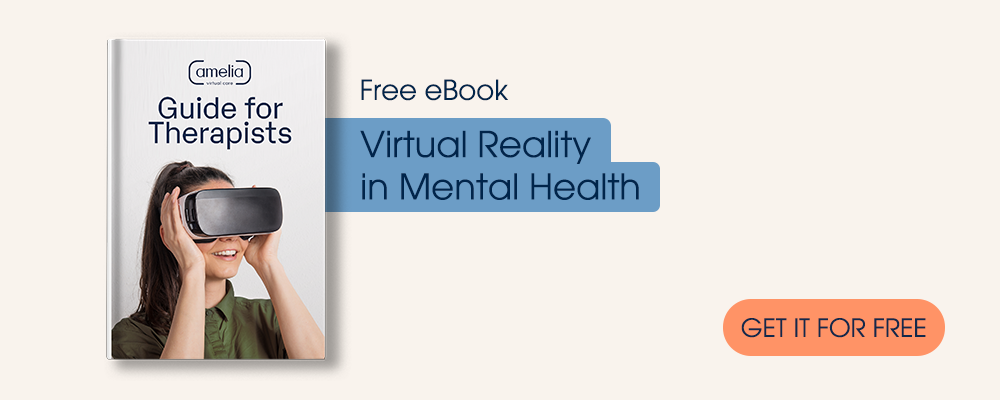Social media marketing has become increasingly popular for businesses across all industries, and medical practices are no exception. Given its convenience and overwhelming popularity, many people turn to social media in times of crisis. The COVID-19 pandemic has been a prime example of this phenomenon. For instance, at the beginning of 2020, Twitter conversations surrounding health and wellness increased a whopping 54%.
Clearly, mental health professionals have an unprecedented opportunity to both inform the public and help stop the spread of misinformation. However, not every clinical practice is successful in its approach. The truth is, social media strategies are constantly changing and include not only the right tactics, but also the right mindset.
So, in this article, we’ve compiled a list of the top five most effective strategies to help you get started with social media marketing in the mental health sector.
1. Post (and engage) on social media
One of the biggest mistakes clinical practices make regarding social media is not staying active on their selected platforms. Essentially, if you want to build a large, engaged following, you need to post regularly. That said, posting ten times in one day on Twitter, then not posting at all for several days after, will not help you build a loyal following.
It’s also important to remember that social media is a platform for conversation. So, it’s always good practice to respond to and engage with your followers instead of constantly pushing out information. After all, people will be more likely to engage with your content if they get a response from someone on your team and feel like they’re talking to an actual person.
2. Create attractive content
The best way to build trust and a positive reputation on social media is to consistently bring value to your patients and give them a reason to follow you. Adding value can come in many different forms, including sharing information about common illnesses, providing tips on maintaining good mental health, or updating them on practice news, such as new hours or staff changes.
The information you provide should, of course, be accurate and credible. But, it should also be attractive and entertaining so that followers can get a better sense of your practice’s personal brand. An excellent way to start is by identifying the major pain points of your patients – in other words, their top interests, questions, and concerns. Then, brainstorm ways to answer those questions and educate your audience in informative and easy ways for the average patient to understand.
3. Make videos
Humans are very visual creatures, meaning our emotions are directly tied to the visual and auditory stimuli around us. Therefore, video is one of the best ways to leave a long-lasting impression on your target audience using compelling visuals and storytelling. Furthermore, your followers will be more likely to process and recall educational information via a video than they will with text or captions alone.
Using videos is especially impactful for healthcare providers due to the complexity of the information they tend to share. For example, a great video can help clinicians explain complicated conditions or treatments in a way that viewers can easily understand, and that is still engaging.
4. Optimize and recycle old content
Your social media posts don’t have to be “one and done.” Repurposing old content into new formats is one of the easiest ways to maintain an active presence on social media with minimal effort on your end. Recycling your content can also take the pressure off your team to create new, exciting posts every week while also getting more out of the high-performing content you’ve already completed.
The simplest way to do this is by keeping track of the posts and articles that perform best and reposting them occasionally – especially if they’re timely or seasonal. Examples of recurring seasonal posts could be an informative article about seasonal affective disorder (SAD) or a yearly post during Mental Health Awareness Month. Other ways of optimizing old content include:
- Refreshing blogs with new research and better writing
- Adding images and graphics to accompany the text
- Updating blogs to include more relevant keywords and SEO
- Including information more pertinent to your current practice
- Fixing 404 errors
5. Use accurate hashtags
Hashtags are a staple of social media, and mental health professionals have many opportunities to use them. While regularly creating high-quality and engaging content is important, hashtags are essential to enable users to actually find you on the vast platforms of Facebook, Twitter, and Instagram.
Use a combination of trending and relevant hashtags to help your content rank higher and make your practice more discoverable for new patients. Whether organizational hashtags, like Northwestern Medicine’s #NMBetter, or mental health-specific tags, like #mentalhealthmatters, promoting tags help expand your practice’s reach and make it easier for followers to share your content.
How Amelia is Helping Clinicians Incorporate Technology into Their Practice
Is your team searching for new ways to add value and incorporate technology into your clinical practice? Amelia Virtual Care is an innovative healthcare company helping mental health professionals like yourself gain more patients and support existing ones using virtual reality (VR) technology. Contact us today to learn more about how our VR solutions can benefit your practice.












